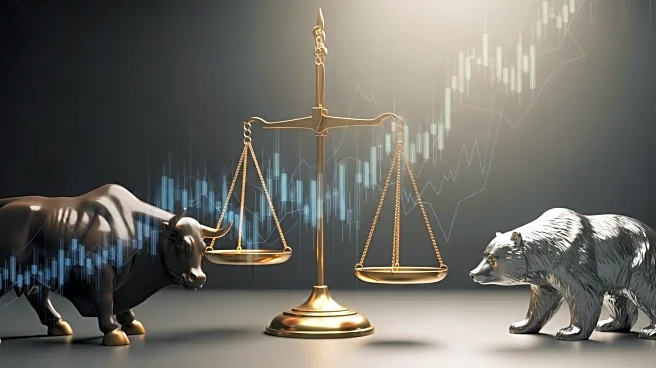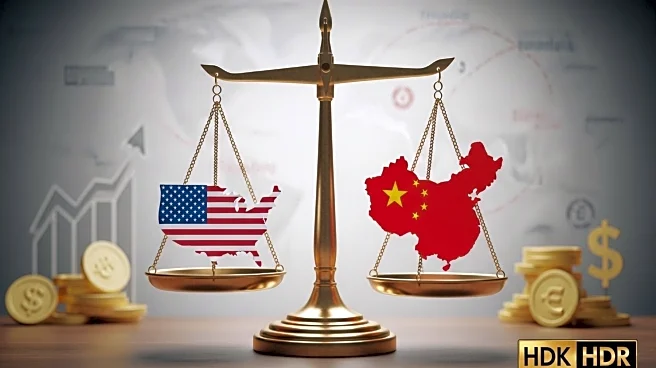What's Happening?
Tech stocks have been experiencing significant volatility due to renewed trade tensions between the United States and China. The tensions have been reignited by tit-for-tat punitive measures, including
China's new export controls on rare earths and President Trump's threat of a new 100% tariff. This uncertainty has affected global markets, particularly impacting tech and chip stocks. Nvidia, the largest company in the S&P 500 by market value, saw a 4.4% drop amid these tensions. The Nasdaq closed 0.72% lower, reflecting the market's cautious outlook as investors assess the potential escalation of the trade spat.
Why It's Important?
The renewed US-China trade tensions have injected uncertainty into global markets, particularly affecting the tech sector, which relies heavily on China's market for sales. The potential disruption of chip manufacturing supply chains could have significant implications for tech companies like Nvidia. Investors are concerned that a resurgent trade war could stoke inflation and raise the risk of an economic slowdown. The volatility in tech stocks could impact investor confidence and market stability, with broader implications for the U.S. economy and global trade relations.
What's Next?
The situation remains fluid as traders and investors await the anticipated meeting between President Trump and Chinese leader Xi Jinping at the APEC summit in South Korea at the end of October. This meeting could potentially lead to a negotiated resolution, but until then, market volatility is expected to continue. Safe havens like gold and silver are surging as investors hedge against geopolitical instability, indicating ongoing uncertainty in the market.
Beyond the Headlines
The trade tensions highlight the geopolitical risks associated with global supply chains, particularly in the tech sector. The reliance on rare earths and other critical materials from China underscores the vulnerability of U.S. industries to international trade policies. This situation may prompt companies to reconsider their supply chain strategies and explore alternative sources to mitigate risks.












